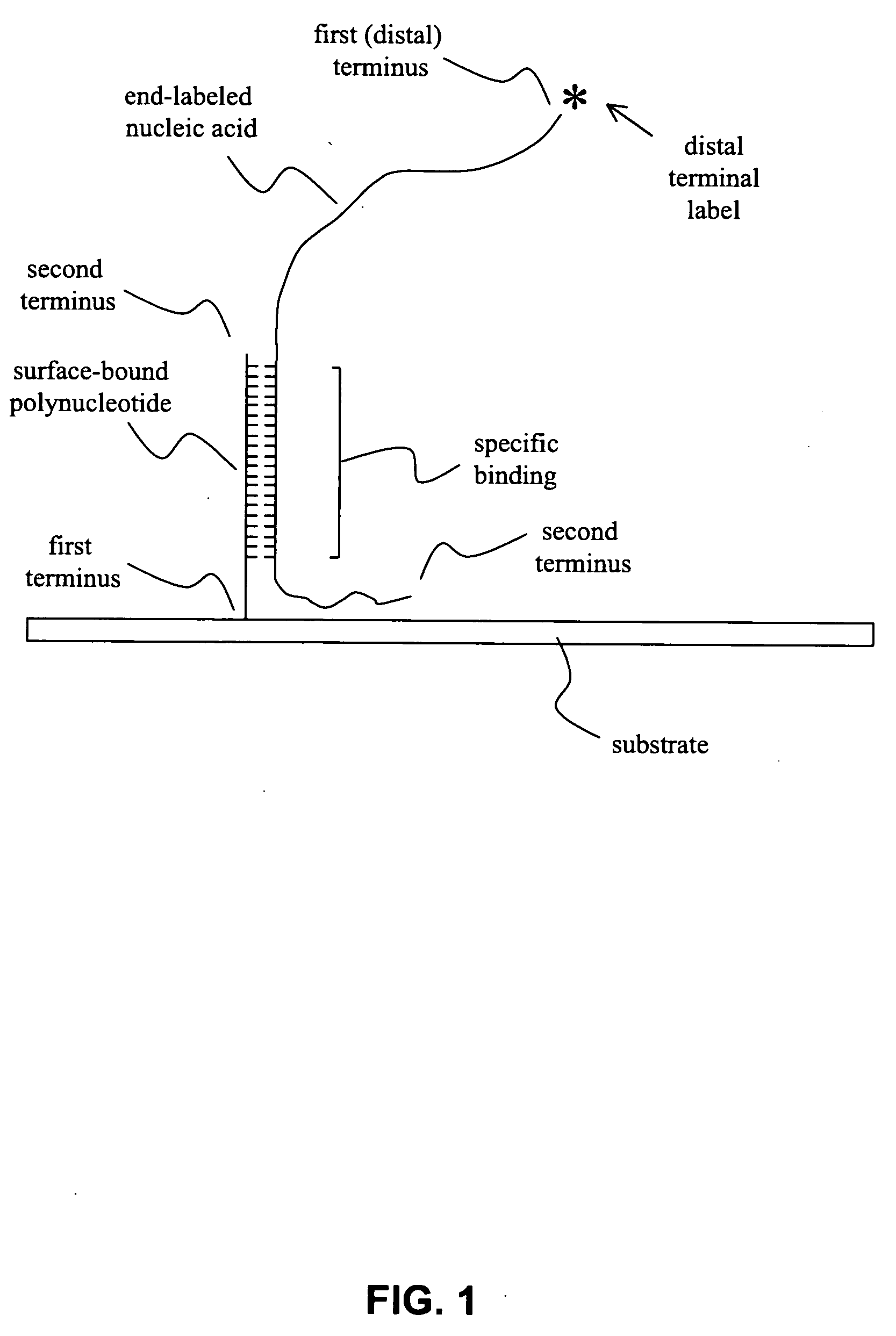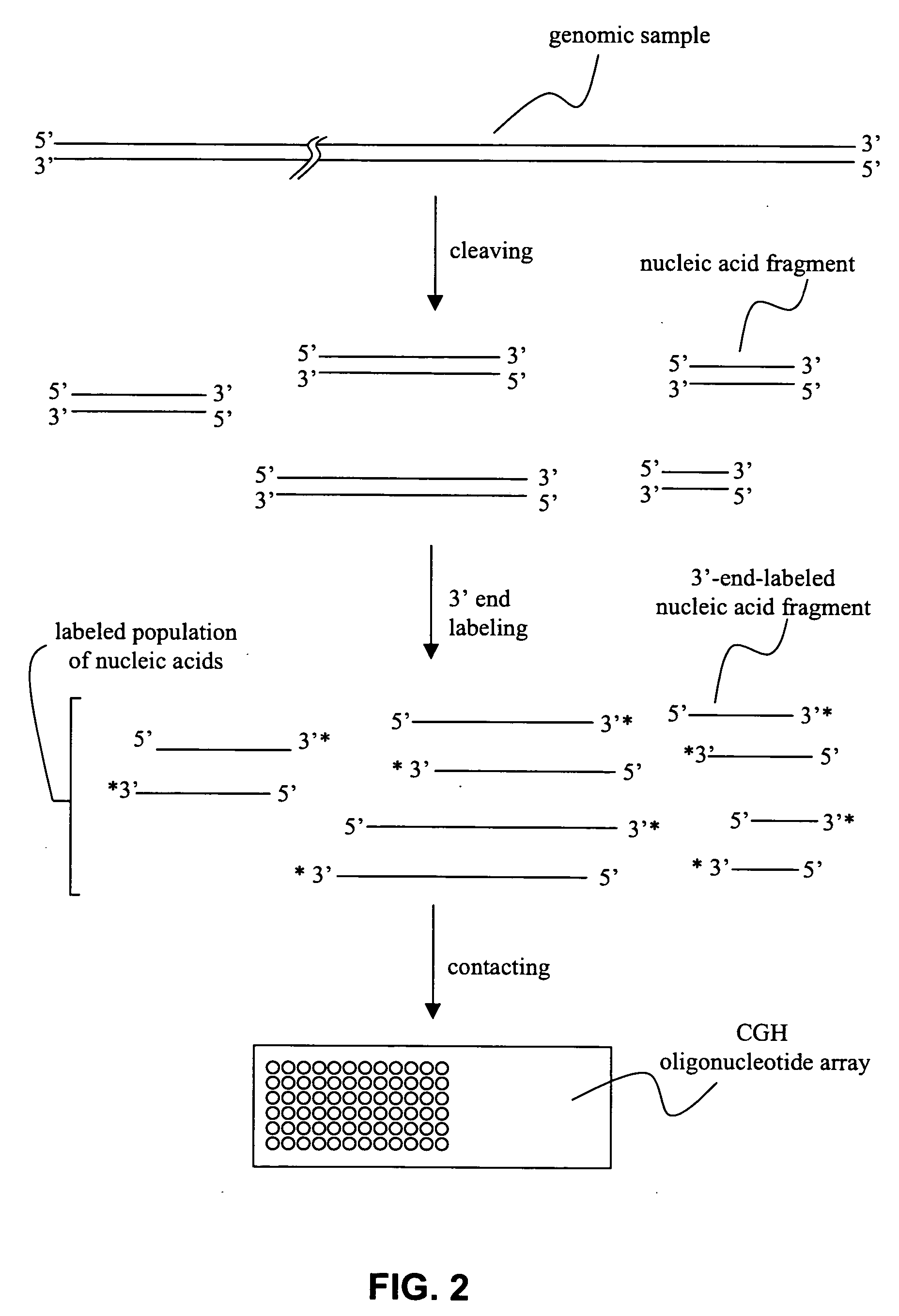Methods and compositions for reducing label variation in array-based comparative genome hybridization assays
a technology of array-based comparative genome and hybridization assay, which is applied in the field of methods and compositions for reducing label variation in array-based comparative genome hybridization assay, which can solve the problems of inaccurate array-based cgh assay results, and genetic disorders that often result from loss or gain of chromosomal regions
- Summary
- Abstract
- Description
- Claims
- Application Information
AI Technical Summary
Problems solved by technology
Method used
Image
Examples
Embodiment Construction
[0043] Methods and compositions for producing a labeled population of nucleic acids for use in an array-based comparative genome hybridization (CGH) assay are provided. In general, the methods involve cleaving a genomic source to produce a sample containing nucleic acid fragments, and end-labeling the nucleic acid fragments to provide a population of nucleic acids having a terminal label. The terminal label is situated distal to the substrate surface when the labeled nucleic acids are hybridized to polynucleotides immobilized on that surface. The subject methods and compositions may be used to assess copy number of a genomic region, and, as such, may be employed in a variety of diagnostic and research applications. Kits and systems for use in practicing the subject methods are also provided.
[0044] Before the subject invention is described further, it is to be understood that the invention is not limited to the particular embodiments of the invention described below, as variations o...
PUM
| Property | Measurement | Unit |
|---|---|---|
| Size | aaaaa | aaaaa |
| Fluorescence | aaaaa | aaaaa |
Abstract
Description
Claims
Application Information
 Login to View More
Login to View More - R&D
- Intellectual Property
- Life Sciences
- Materials
- Tech Scout
- Unparalleled Data Quality
- Higher Quality Content
- 60% Fewer Hallucinations
Browse by: Latest US Patents, China's latest patents, Technical Efficacy Thesaurus, Application Domain, Technology Topic, Popular Technical Reports.
© 2025 PatSnap. All rights reserved.Legal|Privacy policy|Modern Slavery Act Transparency Statement|Sitemap|About US| Contact US: help@patsnap.com



